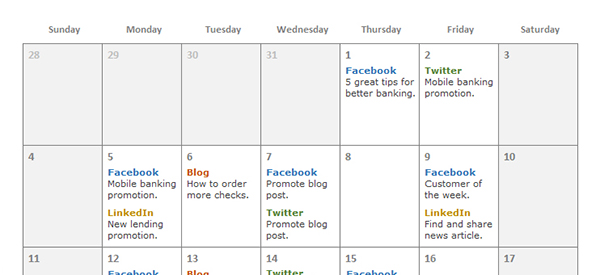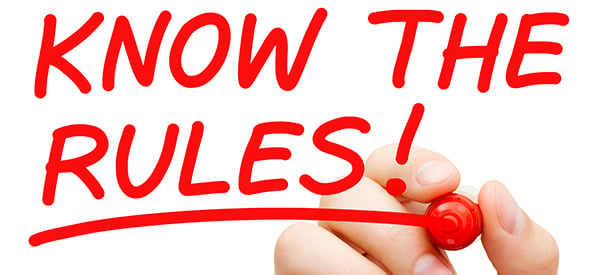Like most marketing strategies, social media marketing begins with a plan. Jumping into social media and simply posting everything everywhere is not a valid approach. Instead, you’ll need to determine which social media channels are worth your attention by first learning which your target audience prefers using. Obviously, it does little good to maintain a Twitter profile, if your core audience uses Facebook and LinkedIn.
With that said, Facebook is the one social media channel that is sure to be at the top of every list. In fact, we highly recommend Facebook for our customers. We’ve found that in most cases, regardless of the financial institution’s location or SEG, their customer base is online, and specifically on Facebook.
Additionally, it is reported that 80% of all people who use social media, use Facebook as their preferred method for connecting with brands and businesses… thus making it the perfect platform for banks and credit unions to build and maintain a social media presence.
5 Tips for Getting Started with Facebook
As a provider of Facebook design and marketing services, one question we are asked quite often is “how do we get started?” With more and more financial institutions now turning to Facebook as a means of reaching and engaging their current and future account holders, I wanted to address this question and share the following 5 suggestions for getting started.
1. Content is King! Develop Your Content Strategy First.
Starting your Facebook campaign without a plan for what your organization is going to be posting or sharing is a major mistake that many seem to make. Knowing exactly what you’re going to post and when is a huge benefit to your team. We recommend creating around 1-3 months’ worth of content ideas ahead of time, and staging them for publish within a schedule or calendar. In fact we suggest doing this prior to taking any other steps towards launching your Facebook page.
Having a detailed content strategy in place will alleviate many of the problems and stress that coincide with managing a Facebook Page, especially at launch time. In addition, this level of forward thinking will allow your marketing team to coordinate content around your institution’s other key announcements and promotions.

2. Outline Your Social Media Team and Roles.
Just as important as ensuring that your organization has enough quality and timely content to go around, is making sure you also have the necessary support in place to manage any and all aspects of your Facebook marketing efforts.
Depending on the size of your financial institution, and specifically the number of locations it serves, assembling and managing a social media team may not be easy. However, it is certainly essential. We recommend that you consider assembling 2 teams – content developers and first responders. Ideally, your content developers will assume the role of creating and scheduling new content, while your response team is tasked with monitoring and responding to community activity. Both roles are vital to the success of a Facebook Page.
Building your social media team beforehand and outlining what each is responsible for will make managing your Facebook Page easier.

3. Define Community Expectations. Create a Facebook Policy.
In many cases, it will make sense for your financial institution to outline a social media use policy to which your team and community members can refer to. Such a policy should explain what your online communities are allowed to say and do while interacting on your Facebook Page. This policy should also outline how the members of your team are to respond in specific situations. Making your rules and expectations known ahead of time will make managing your Facebook Page easier all around.

4. Coordinate Your Facebook Design and Branding.
Yet another task to give consideration to is design. Specifically, does your Page design coordinate with the design and branding goals you’ve already set forth with your website and other social media channels? It is our recommendation that all of your online properties maintain a unified and consistent look throughout.
While Facebook controls a great deal of what community pages look like, at least from a template standpoint, they do allow for some customization. Financial institutions are able to add banners (also known as cover photos), a profile image, and even create individual sub-sections called tabs.
Spending applicable time considering your Page’s design and sub-section options before making it live will help ensure that your online community doesn’t experience a design or branding disconnect.

5. Define What Success Means to You.
My next suggestion, while last on my list, is one that you’ll likely need to give much thought to, and early on in your journey. What does social media success look like to your institution? What are you hoping to accomplish with your Facebook Page? These are worthwhile questions in need of exploring.
Defining what social media success is as well as different ways for obtaining it will ultimately differ from bank-to-bank and credit union-to-credit union. However, the one thing that remains consistent, regardless of the institution or project, is the need to have clear goals.
Some obvious goals might be to acquire new business, increase brand awareness and exposure, or even increase your account holder’s appreciation for your institution through customer service efforts. Whatever your Facebook goals are, having a precise understanding of what you’d like to accomplish with your Facebook Page and being able to track your successes, will go a long way in helping you to stay on track.

In Closing…
Creating a successful Facebook presence – one that helps you to meet your needs and goals – is not an easy task. Nor should one think it to be. If your goal is to simply setup a profile and then minimize your efforts to a mere 5 or 10 minutes per week, then it’s best to stop now and not even get started. You’ll be saving yourself time and future displeasure. The truth is, social marketing, and specifically Facebook marketing, can be difficult and may require the diligent hard work of many.
With that, I hope the tips and suggestions that I’ve outlined above will go a long way to helping you on your journey.
Did you like this blog post?
Get more posts just like this delivered twice a month to your inbox!



